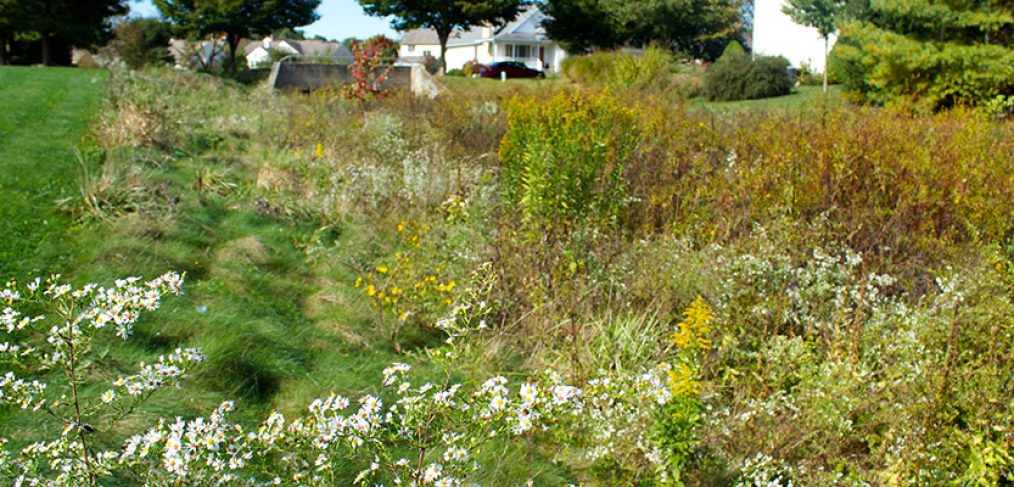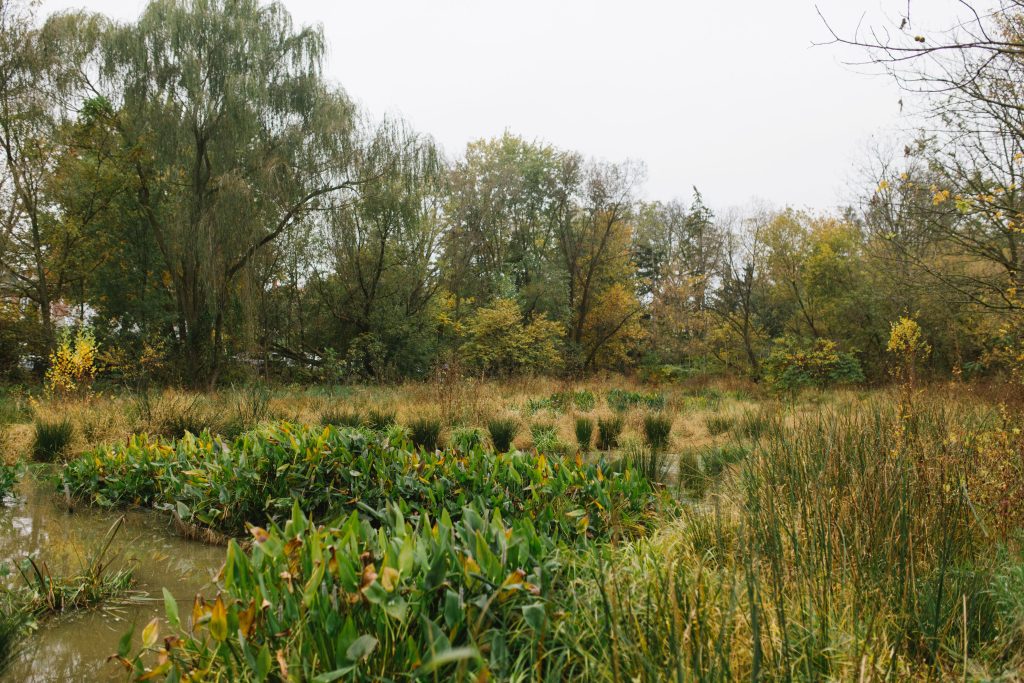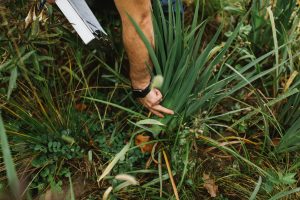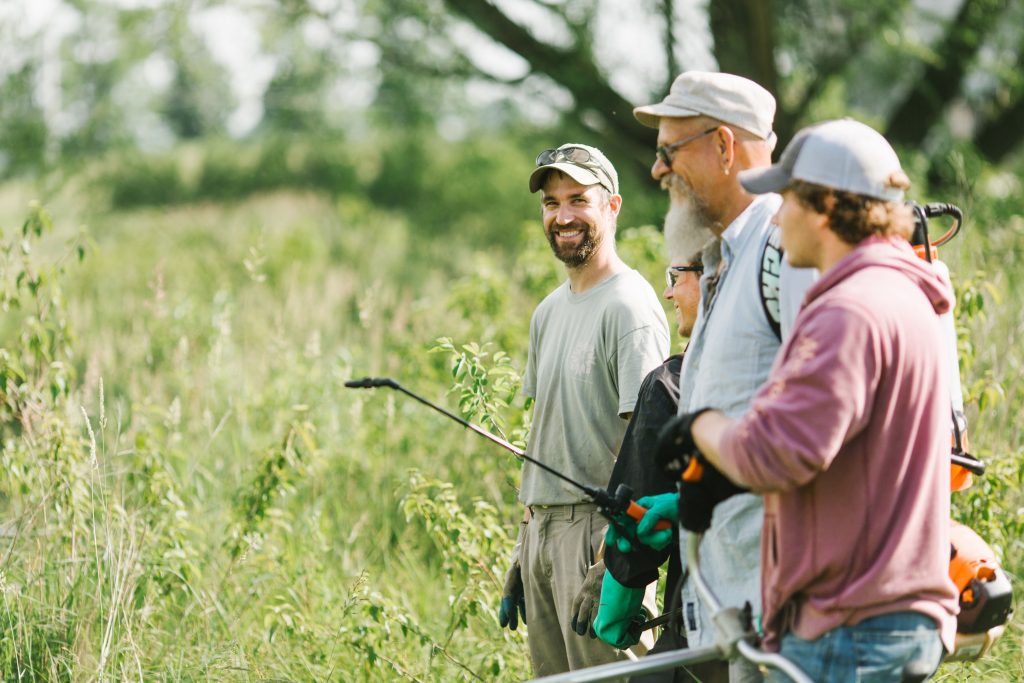
Natural Landscapes Need Maintenance Too
Many people think once a “natural” landscape (i.e., one that is made up of native plants and mimics the site pre-human involvement – like warm-season grass meadows and restored streambank buffers) is installed you can walk away and let it do its thing, but generally, based on LandStudies’ three decades of experience, that isn’t true. Native plant communities are dynamic systems that change from year to year; once established, they can vary significantly within the same site based on soil types, hydrology, sunlight, and topography. As such, there is not a single prescribed management regime that can be applied to all landscapes.
Even a well-designed and constructed natural landscape can be overrun by invasive weeds, trash, and other negative elements if left untended, thus wasting all the time and money that was spent creating it. A healthy, sustainable landscape is one with active care and stewardship.
You need to nurture it, or you will lose it.
LandStudies has a whole division dedicated to the monitoring and maintenance of natural landscapes, for those we have designed and installed, as well as for existing landscapes that cannot be maintained by the landowner alone. This includes several senior centers, including Landis Homes and Brethren Village retirement communities in Lititz and Pleasant View Communities in Manheim, as well as numerous municipalities across central Pennsylvania.

Lititz Run at Oak Street Restoration
Natural landscape maintenance differs from traditional lawn care primarily in the level of technical knowledge that is needed. It takes more than string trimmers and rakes to maintain a meadow or riparian buffer. You need to know about the various plant species – what type of soil, level of sunlight, moisture content, etc. it requires. You need to understand how the ecological system functions as a whole and what makes up its individual components. For instance, if you were to mow or do a prescribed burn on a warm-season grass meadow in the fall, you could destroy all the butterflies and other beneficial insects overwintering in the plant stems, and would remove seeds that birds eat during the winter months. It is best to wait until late winter or early spring to remove the dead foliage, if you need to mow at all.

Lititz Run at Oak Street Restoration
Managing the complexities of natural landscape maintenance can be facilitated by making a Monitoring and Management Plan (MMP). This document will outline what maintenance work will be done (i.e., invasive plant control, mowing, pruning, etc.) when (i.e., monthly, during the growing season, once a year, etc.), and by whom. The MMP should be broken down by the seasons and be specific to the plant species in the landscape. It should take into consideration weather conditions as well as site features. It can also include the best time(s) for replanting, as it is likely that some new plant material will not survive and will need to be replaced. Longer-term plans may also lay out potential future considerations, such as if the site goes from being sunny to shady as trees mature.
Because of the ever-changing character of naturalized plant communities, long-term MMPs should be considered an integral part of any natural area or naturalized landscape, especially those within commercial, residential, or institutional locations.
For example, for the past three years, LandStudies has maintained many of the natural landscapes associated with the south parking lot at Longwood Gardens in Kennett Square. To ensure long-term success, LandStudies provides sustainable seasonal maintenance of the formal landscape beds around the parking lot as well as invasive species management in the established native meadows. We also helped Warwick Township develop a set of guidelines for open space areas in new developments within the township that will ensure these natural landscapes are established properly and maintained consistently.

LandStudies Field Operations Maintenance Staff
Our experience shows that maintenance typically costs $1,000 to $3,000 per acre per year, but that can vary based on the site’s size, aesthetic considerations, maintenance tasks, and initial site conditions when maintenance started. For instance, rain gardens are small but generally take more frequent visits because of their visibility, thus increasing their maintenance costs to more than $3,000 per acre per year. A large floodplain or meadow could cost less than $1,000 per acre per year. Looking at cost per acre, rain gardens are much higher per unit to maintain, but the total budget for one is usually less because the gardens are much smaller in size. For new sites, we often see a smaller maintenance budget in the first year, followed by an increase in years two to three during the establishment phase, then a decrease to a steady routine maintenance cost. Sites that have had little to no maintenance since installation may require a larger budget initially but will likely decrease over time as the site’s needs become more manageable.
If you find that you do not have the staff time or expertise to maintain your natural landscape, consider giving LandStudies a call. Our experienced and certified natural landscape maintenance staff can perform all portions of your site’s inspection, monitoring, and maintenance needs. We can also provide field trainings for your maintenance staff or volunteers to teach them plant identification and site-specific maintenance scenarios. To find out how we can assist you, please contact Nick Myers at 717-627-4440 or nick@landstudies.com.


